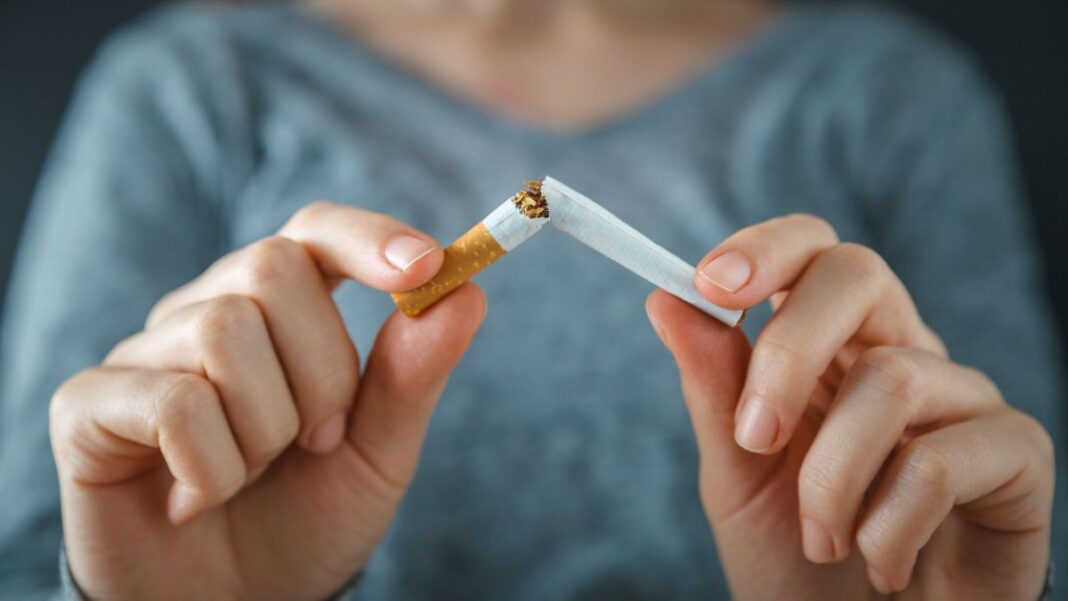No Smoking Day is celebrated on the second week of March every year. The day is celebrated with the sole aim to create and maintain a smoke-free world where there’s no scope for the development of health conditions caused due to the usage of tobacco. The theme for the day changes every year, with a new one being announced a few days before the day. This year, the theme is ‘Quit & Win’.
History & Significance Of No Smoking Day
Having its origins in the United Kingdom, No Smoking Day seeks to address, spread awareness, and control the smoking habit, which has been growing at an alarming rate every year for the last few decades. And, hence, has been a menace for people’s health across the globe. Despite having originated in the UK, the day now has significance throughout the world. The first No Smoking Day was commemorated on the first Wednesday of march in 1984, which is also celebrated as Ash Wednesday. Hence, from the next year onwards, National No Smoking Day was shifted to the second Wednesday of the month. From then on, No Smoking Day is celebrated on the second Wednesday of every year from then on.
As evident from the name, the day is commemorated with the objective to promote the severe health hazards of smoking, create awareness among smokers about the same, and assist them to quit smoking through active initiatives. Campaigns are organised on National No Smoking Day to offer free resources to people as an encouragement to quit smoking and help them in doing so through conscious efforts.
14 Revealing Facts About No Smoking Day
- Tobacco is second only to hypertension in claiming lives across the world.
- Smoking kills 1 in 10 people, according to global data, with one person dying every 6 seconds.
- Almost 40% of men among the global population smoke, while it is just about 9% among women, according to the World Health Organization (WHO).
- According to WHO, smoking causes 6,00,000 deaths on an average annually.
- Every 9th Indian is habituated to tobacco, as per the survey by Global Adult Tobacco Survey (GATS) 2009-2010, which found that there are 12 crore tobacco users.
- In India, 35% of the population over the age of 15 years smoke.
- According to the data secured by WHO 2012 Global report on Mortality, more than 10 lakh Indians die annually from tobacco-related health conditions.
- Direct medical expenditure for tobacco-related health conditions in India amounts to 907 million dollars for smoked tobacco and 295 million dollars for smokeless tobacco, as per Ms Shoba John, who was appointed to the board of 2005 Framework Convention on Tobacco Control (FCTC), the world’s first public health pact.
- The total cost for the use of tobacco amounts to 1.7 billion dollars as a result of indirect mobility costs that include the cost of caregivers and value of work loss due to illness.
- According to IANS, Madhya Pradesh, Kerala, and Bihar are the three states in India to have taken the initiative to ban the sale of tobacco and nicotine-mixed gutkha and pan masala, along with their variants.
- Pogalipaka, a tiny village in Andhra Pradesh, with a population of just about 1,632 inhabitants, is tobacco-free, as a result of the sustained efforts of its residents. The Apollo Cancer Hospital had launched a month-long anti-tobacco campaign to make the state completely free of tobacco.
- One-third of the population who are the victims of secondary or passive smoking are children as a result of being exposed to the smoke at home.
- Cigarettes comprise more than 4,000 toxic chemicals, 50 of which are recognised for causing cancer, nicotine being one of them.
- There is a visible increase in smoking among women from low and middle-income countries.
6 Side-Effects Of Smoking In Females
1. Oral Contraceptives
Women who use oral contraceptives and smoke are at a higher risk of developing cardiovascular conditions like heart attacks, stroke, and blood clot. It is often recommended that women above 35 who smoke should not use oral contraceptives because that further increases the risk of developing these medical conditions. No wonder, the pills come with a strict statutory warning discouraging women who smoke to consume them.
2. Pregnancy
Smoking, especially during pregnancy, is likely to have a detrimental effect not on just the mother but the unborn foetus as well. The habit can manifest in different ways in the foetus like development of birth defects of the lip and the mouth, causing preterm labour and/or low birth weight, or SIDS (Sudden Infant Death Syndrome). Not just that, the foetuses can also be born with respiratory conditions, earaches, and experience more colds.
3. Infertility
Women who smoke and delay childbirth at the same time are more likely to experience difficulty in conceiving and might even experience infertility than non-smoking women who have postponed their pregnancy. This is because of the decreased ovulatory response among women who smoke. How does smoking affect fertility? The chemicals in tobacco may also change the cervical mucus and cause gene mutations in the sperm, making it less favourable for the sperm to fertilise the egg, making conception a challenge. The change in gene mutations may also lead to birth defects, miscarriages, cancer, and other health conditions among the unborn foetus.
4. Pelvic Inflammatory Disease (PID)
PID occurs at a greater frequency among women who smoke in comparison to those who don’t. This health condition often causes fertility issues, pelvic adhesions, and even ectopic pregnancies, demanding immediate medical attention in such cases.
5. Premature Menopause
Women who smoke are at a whopping 43% higher risk of experiencing menopause before the age of 50 as compared to women who don’t smoke. This makes this health condition one of the leading side-effects of smoking in females. Not just that, they also experience menopause 2 to 3 years earlier. Other menstrual issues like abnormal bleeding, vaginal infections, and absence of periods (amenorrhea), may also become a reality among such women. These abnormalities may be the result of toxic effects on ovaries or visibly low levels of oestrogen among women who smoke.
6. Hormone Therapy
The benefits of oestrogen replacement therapy may get negated among women who smoke. This therapy is a boost for post-menopausal women, protecting them from the risk of osteoporosis. Not only can it reduce its benefits, women who smoke may also experience a higher risk of developing cardiovascular conditions like heart attack and stroke.
5 Sure-Shot Hacks To Help You Quit Smoking

1. Ask Yourself Why
This is the first motivation towards kicking the butt – the one that will encourage you to stay away from the harmful habit. Is it for self-preservation, to protect yourself from serious health conditions or to look and feel good? Or is it for your family – to keep them away from secondary smoke? Remember this every time you want to light up and figure out how to stop smoking naturally.
2. Mentally Prepare Yourself
Frequently imagine a time when you’ve kicked the butt and are going great in staying away from it – taking all the right measures and following the good habits that are helping you not give in to the subconscious or conscious decision to reach for your pocket. This will make you mentally strong enough to lead a happy and normal life when you’ve actually turned cold turkey.
3. Opt For Nicotine Replacement Therapy
There’s no shame in seeking help, especially when it is a science-backed one and with a successful track record. Nicotine withdrawal may cause headaches, make you feel less energetic, and affect your mood in the initial days, making you give in to the pressure of taking one last drag. Until you’re back to smoking regularly again. A therapy session will guide you to not give in to the urges by keeping your mind diverted while you experience the symptoms of nicotine withdrawal. Patches, lozenges, and nicotine gums will enable you to stay in your path.
4. Reach Out For Help From Your Loved Ones Or A Support Group
Your friends and family are always there for you in your times of need. This is the time when you can ask for their help in assisting you to quit smoking. In whatever way you want them to. Make you conscious when you reach out for your cigarette or keep you pepped up when you’re feeling down – just ask it out. How to stop smoking naturally? This definitely is one way you can go about it.
To add to that, you can also join a support group. Or you and your smoker friends and fam can decide to quit smoking together, so you already have a close support group, where each one of you can pull each other up during the toughest of times that you will be experiencing together.
5. Pick Up A New Hobby
One of the primary reasons why people turn to smoking is to help them relax. While one door to relaxation is closing because you’ve decided to stop smoking, close another door by returning to a hobby that you’ve left behind or by inculcating a new one. Anything that catches your fancy. Go swimming, learn driving, painting, pottery, coffee tasting class – anything that keeps your mind diverted from smoking.
While kicking the butt isn’t as easy as it may sound (former smokers and people wanting to quit will vouch for it!), it isn’t an impossible task either. Not if you consciously try hard and don’t give up till you’ve reached your goal. Whether you’ve realised the ill-effects of smoking or are wondering how to quit smoking, know that kicking the butt is not only for your good but for those around you as well – your family, friends, and passersby. So, happy quitting the butt to you all on National No Smoking Day!
Open up like never before and participate in conversations about beauty, entrepreneurship, mental health, menstrual & sexual health, and more. Desi women, join our community NOW!


